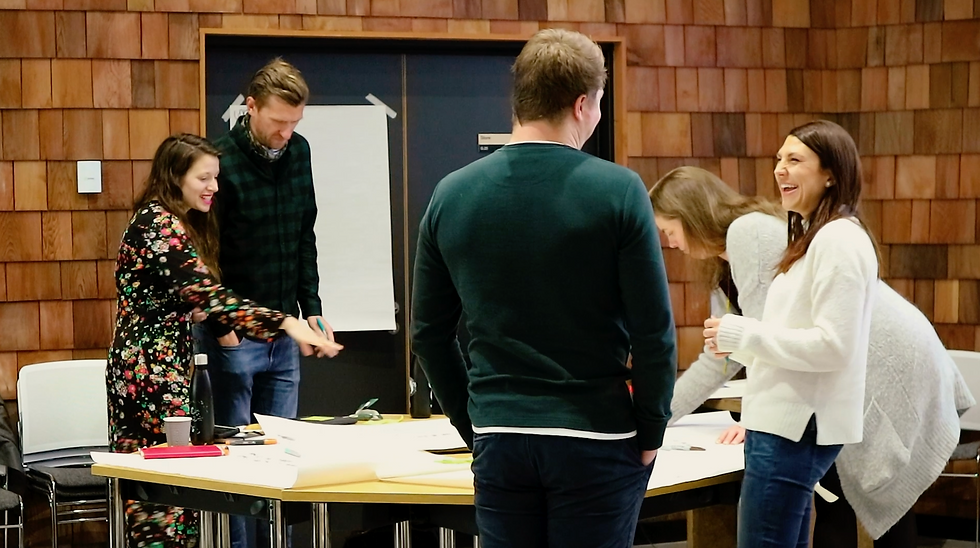The benefits of Design Thinking in Executive Education. A case study of Rapid Design Interventions delivered for Newcastle University Business School Executive MBA programme.

In the rapidly evolving landscape of education, innovative pedagogical approaches like those employed by Newcastle University Business School's Executive MBA programme are essential for preparing professionals to tackle complex challenges. Our recent academic article titled "Design Thinking as Pedagogy in Practice" sheds light on the transformative impact of integrating Design Thinking into Executive Education.
Background
Design Thinking is an approach celebrated for fostering creativity and problem-solving, which has gained prominence across various fields. However, its application in Executive Education has been a relatively unexplored territory.
In 2022, we designed and facilitated several series of Rapid Design Interventions for Newcastle University Business School's Executive MBA programme, each series responding to a brief posed by an external client organisation (3 in total). These Rapid Design Interventions all followed a Design Thinking approach (see figure 1).

Following this piece of work, The Blooming Platypus joined the academic team, Dr Lucy Hatt & Dr Jenny Davidson, and together conducted a study to delve into the integration of Design Thinking principles into an Executive MBA program, revealing noteworthy insights into its benefits and outcomes.
Key Findings
The study highlights the effectiveness of incorporating Design Thinking as a pedagogical approach using the example of two modules of the Executive MBA program. Through a combination of blended learning materials and hands-on, collaborative projects with client organisations that were designed and facilitated by The Blooming Platypus, learners were immersed in a human-centred problem-solving process.
Developing Creativity and Empathy
One of the central themes highlighted in the study is the development of creativity and empathy among learners. Design Thinking, as a pedagogical tool, proved instrumental in fostering these crucial skills. The experiential projects encouraged participants to think innovatively, identify with end-users, and approach challenges with a fresh perspective.
Impact on Learners
Data gathered from client feedback and learners' reflective assessments demonstrated the tangible impact of Design Thinking. Participants not only gained a deeper understanding of complex business challenges but also developed the confidence to lead change initiatives within their respective organisations. The integration of Design Thinking principles empowered them to navigate and address real-world problems effectively.
Overall, the study contributes valuable insights to the realm of Executive Education, emphasising the potential of Design Thinking as a powerful pedagogical tool. By equipping learners with essential skills and mindsets, this approach proves to be a catalyst for driving organisational innovation and sustainability.
Final thoughts from The Blooming Platypus
As the educational landscape continues to evolve, embracing innovative pedagogies like Design Thinking becomes imperative. Our article not only explores but also substantiates the positive impact of integrating Design Thinking into Executive Education. The findings encourage educators, institutions, and professionals to consider this transformative approach for preparing the leaders of tomorrow.
To read the full article, click here.
Acknowledgements
We want to thank Dr Jenny Davidson & Dr Lucy Hatt from Newcastle University Business School for their trust throughout our collaboration and their boldness in approaching new pedagogical approaches. It has been an immense pleasure to work alongside them over the years.
We also want to highlight that none of this work would have been possible without the contribution and the participation of the three client organisations and the Executive MBA programme cohort.
#designinnovation #designledinnovation #designthinking #designfacilitation #executiveeducation #mbaprogramme

Comments